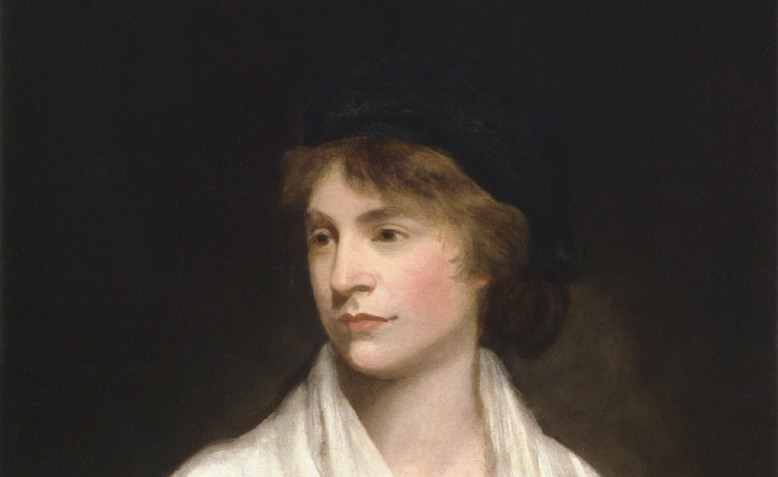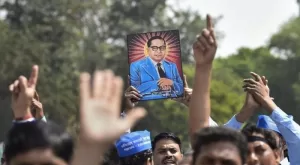The final decades of the 18th century were marked by revolutionary movements. In America, the 13 colonies gained their independence, in Ireland, the United Irishmen, although tragically defeated in 1798, had a strong movement which inspired future generations. In England, the demand for Parliamentary reform, together with demands for equal rights for dissenters and even Catholics, and the movement for the abolition of the slave trade inspired movements which finally succeeded. The slave trade was abolished in 1807, Catholic emancipation was granted in 1829 but many of the demands of the Parliamentary reformists have still to be met.
Campaigners in all these movements knew and supported each other. Olaudah Equiano, the African anti-slavery campaigner, wrote The Interesting Narrative of his life in the house of Thomas Hardy, who started the London Corresponding Society in support of Parliamentary reform, and was enthusiastically welcomed in Belfast by the United Irishmen. Among these radicals was a friend of the dissenter Dr Price at Newington Green, Mary Wollstonecraft, who reviewed The Interesting Narrative.
It was also Wollstonecraft who wrote A Vindication of the Rights of Men, the first reply to Edmund Burke’s Reflections on the Revolution in France (1790) which glorified monarchy and aristocracy. Her essay preceded Thomas Paine’s Rights of Man, and points out that Parliament is corrupt, that men cannot progress in their professions without ‘interest’ and that it is only the property of the rich which is secure. ‘Why cannot large estates be divided into smaller farms?’ she asks, remarking ‘how many mechanics lose their employment’.[1] She then followed it up with A Vindication of the Rights of Woman[2] – an oppressed group which no one else had considered.
Wollstonecraft saw the most evidence of women’s oppression in the middle class. Although acknowledging the lack of education for working women, she found they had greater strength of mind, while the ‘women of quality’ had more opportunity of educating themselves. However, most of the assumptions about women stemmed from the behaviour and education of middle-class women, who were brought up only to please men in order to get a husband. They spent most of their day in sedentary occupations, such as sewing and they were trained to behave in a coquettish way to attract men with foolish conversation and manners. They were only allowed limited exercise. They were then sneered at for being weak and foolish.
Wollstonecraft quoted ideas on the education of women by Jean-Jacques Rousseau and two English writers, a Dr Gregory and Dr Fordyce, who all insisted on the necessity of educating women to be subservient to men. While they were brought up to be flirtatious, they had at the same time to remain chaste before marriage and faithful to their husbands afterwards, whereas the husband was allowed sexual freedom. Wollstonecraft points out that ‘all our arts are employed to get and keep the heart of man’ (p. 160). Women were expected to be modest, passive, pleasing to men, chaste. In fact the reputation for chastity was ‘the sum total of female duty’ for which ‘she may neglect every social duty yet still present a shameless front’ (p. 206).
Wollstonecraft felt with good reason that she knew more about the education of women than these men, and in her experience ‘a girl whose spirits have not been damped…will always be a romp’ (p. 81) – in other words would run about and play at boys’ games if she could. Women were regarded as ‘the weaker sex’ but Wollstonecraft saw no reason that they should be even weaker from lack of exercise. She thought that both sexes and all classes should be educated together at government run day schools and that all children should study the same subjects. This would mean that women could become physicians, study politics, read history ‘of man’, regulate a farm, manage a shop, and would not then ‘marry for support’. (p. 222) She asked, ‘Is one half of the human species, like the poor African slave, to be subject to prejudices that brutalise them?’ (p. 218) Wollstonecraft not only used the comparison to slavery to make her point but compared women to ‘a numerous class of hard-working mechanics who pay for the support of royalty when they can scarcely stop their children’s mouths with bread’ (p. 220).
These eighteenth-century ideas of how women should behave have descended to us in the twenty-first century, despite the fights for women’s liberation which have occurred over the last 200 years. Appearance is perhaps even more important to women, and double standards still exist, as women do not have complete equality in either education or sport. So what Wollstonecraft said in 1791 has not lost its vigour, and just as the racist ideas which resulted from slavery linger so do ideas about the position of women.
Wollstonecraft was a farmer’s daughter who, with her two sisters, had kept a school for girls. She had been a governess in the family of Lord Kingsborough in Ireland, but on return to England she began to write as a freelance. She was encouraged in this by the radical publisher, John Johnson, who published her autobiographical novel, Mary, and then commissioned her to write Original Stories about the education of women, based on her life with the Kingsboroughs and illustrated by William Blake. She was believed to be the first woman to make an independent living in this way. Clearly, she was well qualified to write about women’s education.
Wollstonecraft went to France to see the Revolution for herself and became friends with many important players in the revolution including Babeuf, whom she considered ‘the most extraordinary political thinker she had ever known’.[3] However many of her friends were Girondists, like Madame Roland and she was horrified by the execution of Louis XVI. When war broke out between England and France, she remained in France with her American lover, Gilbert Imlay, and their daughter, Fanny, was born. Shortly after this, though, Imlay went to England and, despite sending Wollstonecraft loving letters, became involved with another woman. Although in many ways Wollstonecraft would have preferred to stay in France, she returned to England.
Imlay then sent her to Norway and Sweden to try and recover some goods of his which he was attempting to run past the blockade imposed on France by the British. This experience inspired Wollstonecraft’s Letters written in Sweden, Norway and Denmark, which was very much admired by, among others, the poet Robert Southey. Wollstonecraft became so despairing at Imlay’s treatment of her that she attempted suicide but she was rescued. She met the political philosopher, William Godwin, and it seems that they found together the kind of relationship that they wanted: an equal partnership with the time for them both to write. Godwin became a father to Fanny, and although neither of them believed in marriage, they did marry and were happy. Tragically, after only a year together Wollstonecraft died of complications after giving birth to their daughter, Mary, who was to become the author of Frankenstein.
After her death, Wollstonecraft’s influence waned, and the details of her life shocked her contemporaries when Godwin published her biography. But the suffrage movement towards the end of the nineteenth century brought her to the fore once again. Today, she is finally beginning to be appreciated as a political thinker and a writer.
Notes
[1] Emily Sunstein, A Different Face, Harper and Row (New York, 1975), p. 196
[2] A Vindication of the Rights of Woman: With Strictures on Political and Moral Subjects, https://books.google.co.uk.
[3] Sunstein, p. 264
(Jacqueline Mulhallen is an actor and playwright, and author of many books. Article courtesy: Counterfire, a British socialist organisation and website.)




